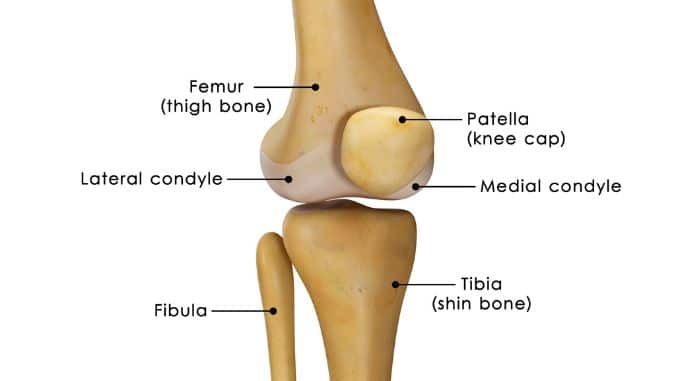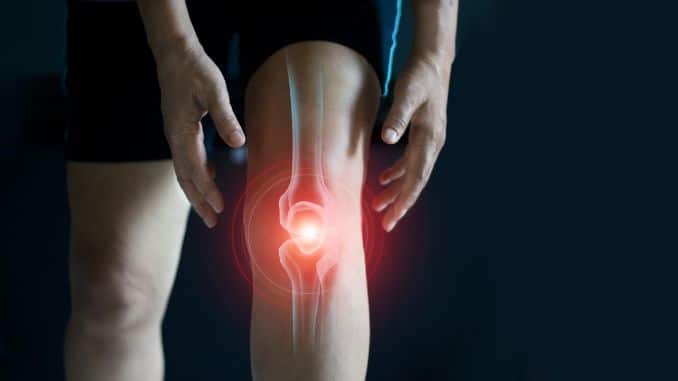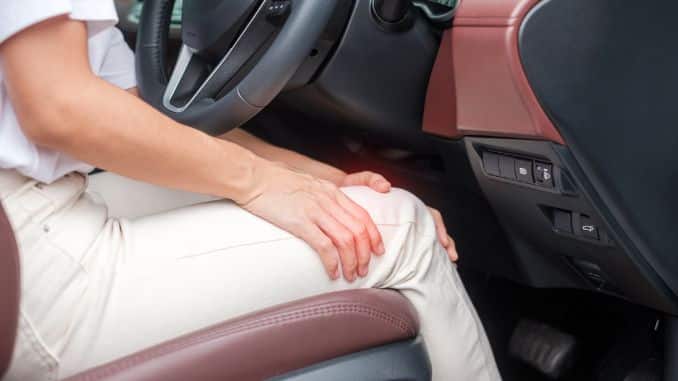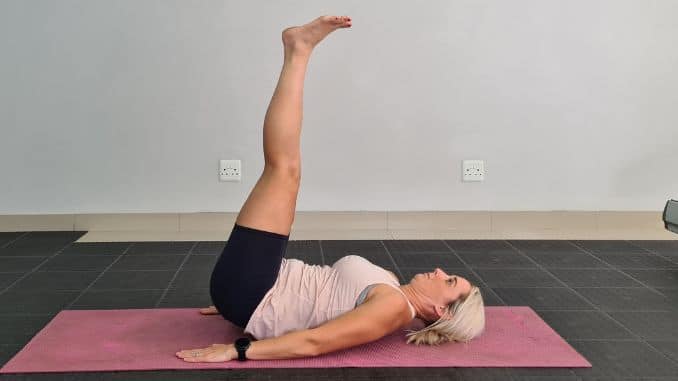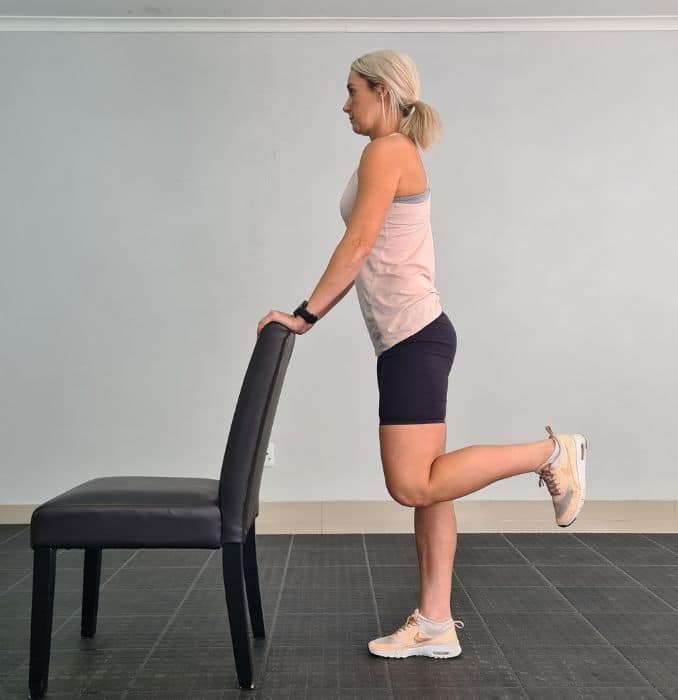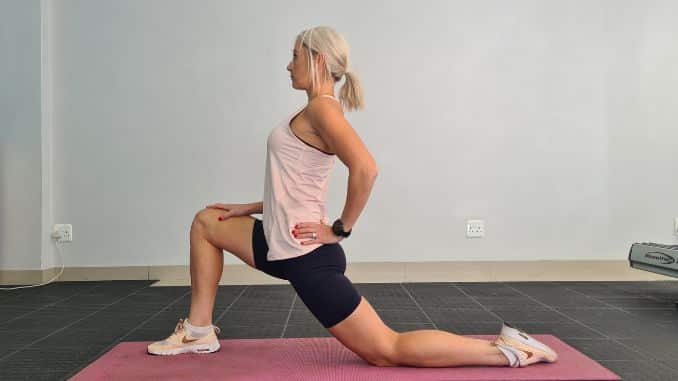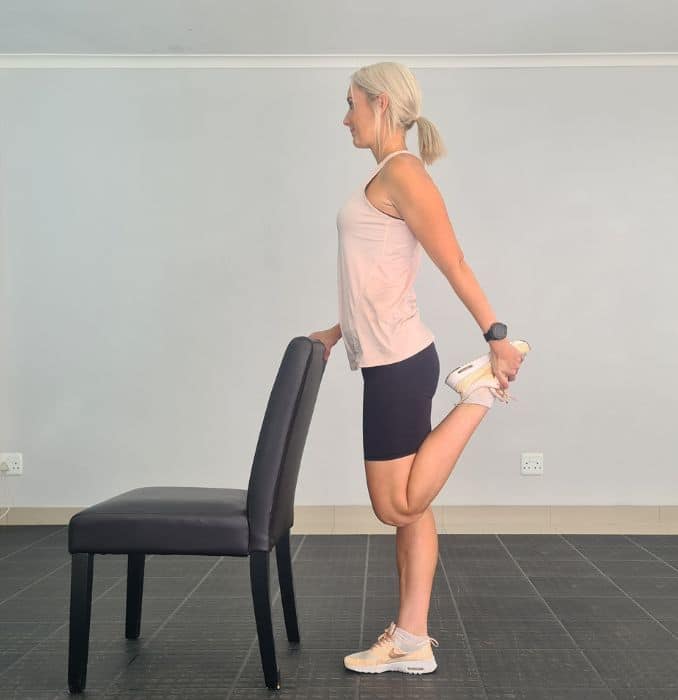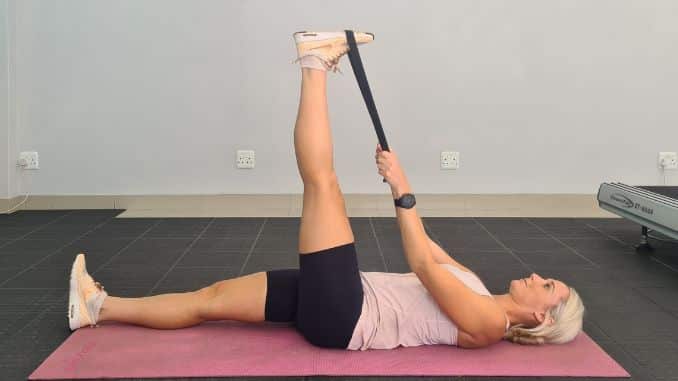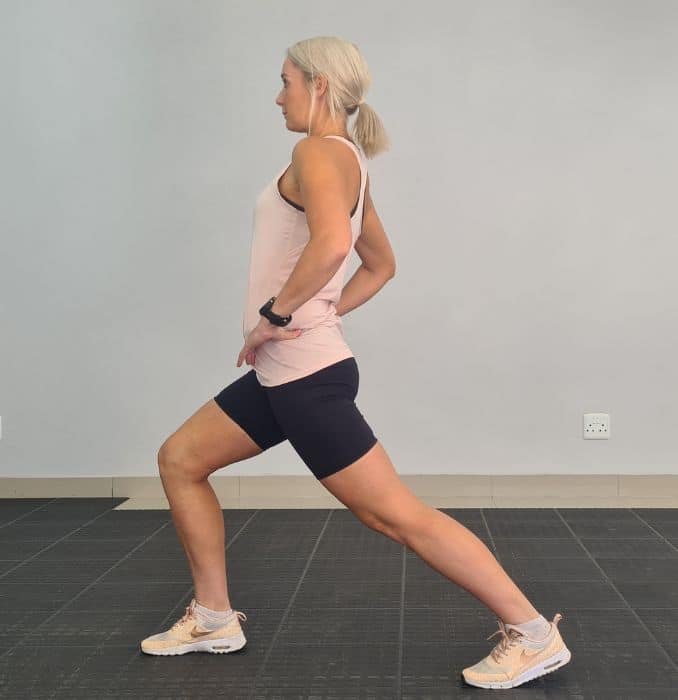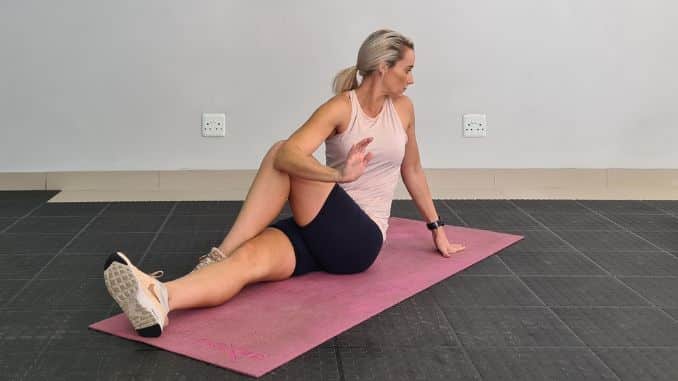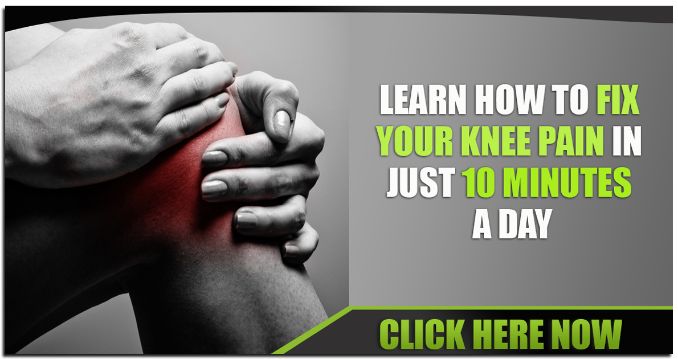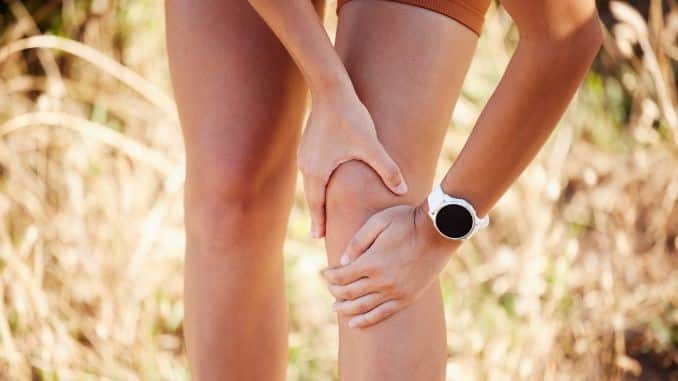
While climbing up the stairs or walking uphill, you start to notice that there is a cracking or popping sound on your knees when you move then you wonder if it’s something you should be worried about. The cracking or popping sound, also known as Crepitus, on the knee or knee issues is typical when we get older. That is because the cartilage inside the joint becomes thin and worn out, creating a space that can be filled with air bubbles that ‘pop’ when you the joint. Read on to know more about Knee Stretches and some exercises.
However, it’s a different scenario if there is pain after the cracking/popping. Apart from that, you should also take note of the onset of the popping sound, the type of sound, and what activity it manifests with because this can help your doctor determine what condition it is associated with.
Anatomy Of The Knee
Since the knee is the largest joint in the body, it also becomes one of the most common injured joints. It’s a complex joint with different anatomical structures trying to keep it intact and stable to ensure that you move swiftly.
The bones in the knees are your femur (thigh bone), tibia (shin bone), and patella (knee cap).
These bones are held together by the 2 cruciate ligaments (Anterior Cruciate Ligaments and Posterior Cruciate ligaments) and 2 collateral ligaments (Medial Collateral Ligaments and Lateral Collateral Ligaments). This helps your bones together and prevents subluxation and displacement within the knee.
Your meniscus is the structure that serves as the cushion between the bones, preventing them from rubbing against each other. Your lateral and medial knee joints contain C-shaped cartilage. The inner portion is rich in blood supply, while the outer portion doesn’t have a blood supply.
There is a thin synovial sheet that covers the whole joint, making the knee joint a synovial joint. It is responsible for supplying a synovial fluid in the joint to lubricate it.
What Happens In The Joint?
The cracking or popping sound can be classified as physiological or pathological. A physiological sound is produced when the ligaments inside your knee slide awkwardly against the other structures, and it shouldn’t cause pain. Another scenario where there is a popping and cracking sound is when there is a gas build-up inside your joint’s synovial fluid, and when you move your knees, it will burst due to changes in pressure in your joints. Both scenarios shouldn’t cause any pain at all.
On the other hand, an underlying injury or trauma causes pathological sound. The cracking or popping sound followed by pain and weakness could result from ligamentous or meniscus injury, while gradual pain and the longer onset of crepitus can be associated with arthritis. This is why Knee Stretches are very helpful.
Conditions Of The Knee
Normally the cracking and popping do not require medical attention unless it is accompanied by other symptoms like pain, difficulty in walking or weight-bearing, and weakness. We also need to consider the structures affected, different anatomical structures manifested with another symptom.
Arthritis is due to degeneration of the cartilage inside the knee; because of this, the bones of the knee are rubbing with each other resulting in pain upon prolonged activity. Aside from pain, you can feel a cracking/crackling sound upon movement. This is also accompanied by stiffness of the joint and difficulty in bending it due to pain. To test if you have crepitus secondary to osteoarthritis of the knee, you can sit on a table or bed with your legs dangling at the side. Place your palm on top of your knee, then slowly straighten your knee. You can feel under your hands the sensation of crunching/crackling.
Since there is no cure for OA, the doctors will prescribe you medications that can help manage the pain and modify the activities you usually do to avoid aggravating the pain and delaying the progression of the condition. Knee Stretches are a great help.
-
Ligaments Of The Knee
Due to the anatomical structure of the ligaments of the knee, wherein passes through the joint, when it’s sprained and torn, you will hear a pop sound followed by weakness and difficulty in standing up. The most common type of injury for this is the Anterior Cruciate Ligament (ACL) Tear. This happens to individuals who suddenly twist their legs while their foot is planted on the ground, especially athletes. You should go to your doctor to have it checked since this requires reconstruction surgery since, if left untreated, it can result in an unstable knee. Aside from that, there is a presence of swelling.
-
Meniscus Tears
Meniscus injury could come from an injury or trauma, but it could also originate from a thinning secondary to degeneration. A twisting motion on a slightly bent knee will make a pop or cracking sound that is usually an indication of a tear of the meniscus. Clinical signs and symptoms include pain in the joints, swelling, catching or locking of the knee joint, inability to extend or bend, and limping fully.
-
Patellofemoral Pain Syndrome
Patellofemoral Pain Syndrome (PFPS) is a condition where there is pain in front of the knee, around the patella, or kneecap. Individuals who participate in sports are the ones who mostly experience it. That’s why it is called “Runner’s Knee” or “Jumper’s Knee.” There are different factors to consider when PFPS occurs, such as overuse and patellar malalignment. The pain usually occurs during exercise; climbing up the stairs also triggers the pain, and prolonged sitting with a knee bend can also trigger pain, as popping and cracking sounds in the knee. To avoid this, you definitely need some Knee Stretches.
How To Diagnose It?
To properly diagnose the source of your crepitus, your doctor will perform a physical examination, diagnostic procedures, and several tests to rule out the cause. This will determine what’s the appropriate treatment for you.
-
Xray
This imaging test is sensitive to dense structures like bones. This can see if there is a narrowing between the bones of the knee, indicating degeneration of the cartilage.
-
MRI or CT Scan
These imaging tests are sensitive to soft tissues and ligaments; these can help determine if the affectation includes the ligaments of the knees.
What Are The Tests To Assess It?
There is no specific test designed to assess crepitus since it’s also a symptom. Still, if we consider the coupling symptom it comes with, we can perform tests to rule out conditions that can determine the root cause.
1. Lachman Test
The doctor performs this assessment test with the patient in a supine position and flexes the affected knee to 30 degrees. The doctor will stabilize the distal femur with one hand, grasp the shin bone near the knee, and attempt to distract the tibia forward. Subluxation of the shin bone anteriorly indicates a positive test for an ACL tear.
2. Posterior Drawer Test
The patient should be supine with knees flexed to 90 degrees and feet flat on the bed. The examiner should stand at the side of the examination table and observe the displacement of the tibia. This is called the posterior sag sign, wherein the displacement of the tibia is noticeable to notice a sagging from the knee. This is an indication of a Posterior Cruciate Ligament tear.
3. Varus And Valgus Stress Test
The patient should be in a supine position, with legs slightly abducted. The examiner places one hand at the lateral aspect of the knee joint and the other at the medial aspect of the end of the tibia. Then the examiner can apply lateral force (Valgus Stress) to the knee, one during full extension and the second during 30 degrees of knee flexion. Note for subluxation of tibia on femur. Shift the placement of the hand, one hand on the medial aspect of the knee, and the other hand placed at the lateral aspect of the end of the tibia. This time apply a medial force (Varus Stress) on the knee, one during full extension second during 30 degrees of knee flexion.
Noticeable subluxation of the tibia during the stress test will determine what ligament is affected. If there’s a difference in subluxation during the Medial Stress Test/Varus Stress Test, the affected ligament is the Lateral Collateral Ligament and vice versa.
4. McMurray Test
The physician will grasp the patient’s heel with one hand and the knee with the other. The physician will flex the patient’s knee maximally. To localize what meniscus is affected, the knee will be rotated internally or externally. Also, to test the lateral meniscus, the physician will rotate the tibia internally, and the knee is extended from a maximal bending to about 90 degrees, adding compression to the lateral meniscus. To test the medial meniscus, the physician will rotate the tibia externally, and the knee is extended from a maximal bending to about 90 degrees, adding compression to the medial meniscus. The test is positive when it produces a thud or click or causes pain in a reproducible portion of the range of motion.
Cracking Knee Treatment
The treatment for crepitus depends on the affected structure, so the best option is to get a proper diagnosis from your doctor. This will also help in determining what is the best program for you.
If the popping and cracking of the knee are not accompanied by pain, then it is not something you should worry about. However, the presence of pain indicates a possible injury, and depending on the onset of pain and popping is the appropriate treatment.
1. RICE Technique
This is the most common remedy to do at home. Rest, Ice, Compression, and Elevation, also known as the RICE technique, can help preserve the injury to its current state and avoid further damage before getting assessed by your doctors. This can promote pain relief and assist in acute injury.
2. Immobilization
Keeping the injured knee stable and immobilized can also help reduce the aggravation of the injury. The attending doctor will be the one who will prescribe this because they need to assess the best brace you can use according to your lifestyle.
3. Exercise
Your doctor may refer you to physiotherapy rehabilitation to address strengthening the musculature of your knee joint or some Knee Stretches, especially if the snapping and cracking are associated with a ligament tear.
4. Surgery
This is rarely prescribed and is usually only indicated for late-stage osteoarthritis and for elderly patients who can’t tolerate the pain. One takes into consideration arthroscopy as one of the procedures.
Cracking Knee Exercises
Once the pain has subsided and you have a go signal from your doctor that you can initiate Knee Stretches.
Here are some Knee Stretches that you can do:
Strengthen The Knee
1. Sidestep With A Resistance Band, Inner Thigh Squats, And Vastus Medialis Obliquus Activation
You’ll need an elastic band to wrap around your thighs. Stand straight with feet apart, and slightly bend your knees. Sidestep to your right, don’t let the elastic band slip down your thigh, tighten your core and activate your thigh muscles against the resistance of the band. Do this for 5 repetitions per laterality in a set of 2 repetitions.
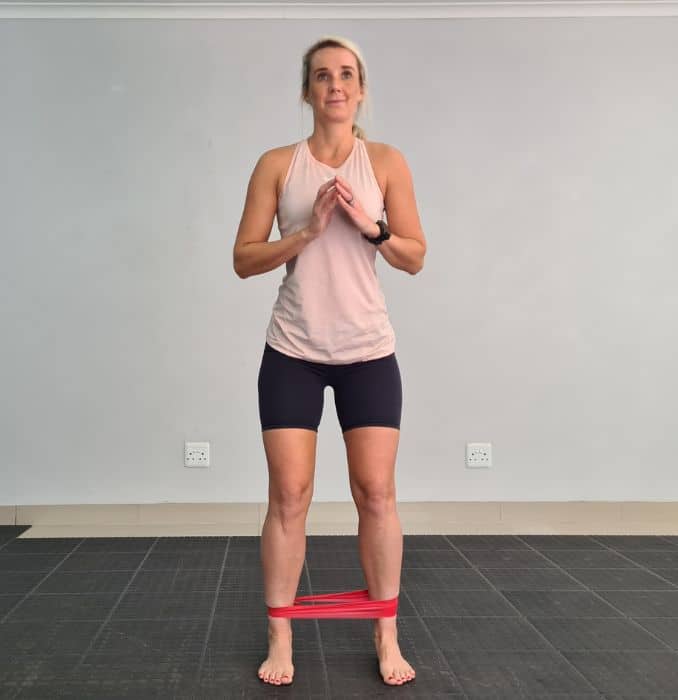 |
 |
2. Leg Lifts
This Knee stretch is done to strengthen your leg muscles and abdominal areas. You can do this in a supine position and relax your back on the floor. Then, arms are placed at your side. After that, slowly lift one leg upwards without arching your back and activating your abdominal area, and the other leg relaxes on the floor. Lastly, do this for 5 repetitions per leg in a set of 2 repetitions
3. Standing Hamstring Curls
This is done to strengthen your hamstrings. Stand in between two chairs, and use the backrest of the chairs as an assist. Start with one leg, and bend your knee backward maximally. Hold for 1 second before slowly extending it to return to the original position. Finally, do this for 5 repetitions per leg in a set of 2 repetitions. Progress this by adding ankle weights as tolerated.
4. Step Exercise
Firstly, stand in front of a sturdy block or stool that’s not more than 6 inches in height. Secondly, step the right leg on top of the stool and then slowly push yourself upwards while letting your left leg follow. Thirdly, don’t bend the knee; just let it dangle at the back. Then, shift your body weight on the right leg on top of the stool. Slowly lower your left leg to return to the original position. Lastly, do this for 10 sets with a repetition of 2 sets per leg.
5. Squats
Squats, as one of the Knee Stretches, can help strengthen your quadriceps, femoris, and your gluteal muscles. Firstly, stand with feet apart, then slowly lower your buttocks as if you’re sitting on a chair. Then, keep your knees aligned, and do not go beyond your toes. Afterward, you should feel a contraction in front of your thigh and buttocks region. Lastly, do this for 5 sets with 2 repetitions.
6. Lunges
Bend in an upright standing position, maintaining proper alignment with your head, shoulders, hips, and legs. Then, place your hands at your sides and engage your core. Take a big step back with one leg and lower your back knee to the ground at an approximately 45-degree angle. And then, raise back up to return to the starting position and repeat the movement. To increase the resistance, you can add dumbbells. Do this for 1 set of 10 repetitions on each side.
7. Wall Squats WithBall Squeeze Between Thighs
If you find squatting difficult, you can do this wall squat as a modification.
Begin this Knee Stretch in an upright standing position with your feet shoulder-width apart. Then, press your back against the wall, and lower your body in a sitting position as you bend your knees. Lastly, push your heels and straighten your legs to rise back up to a standing position, completing the squat position.
If you want to add more challenge, you can place a medicine ball between your thighs, and when you’re in a sitting position, you need to squeeze it or maintain it, and hold it for 2 seconds before returning to the original position. Perform this for 1 set of 10 repetitions.
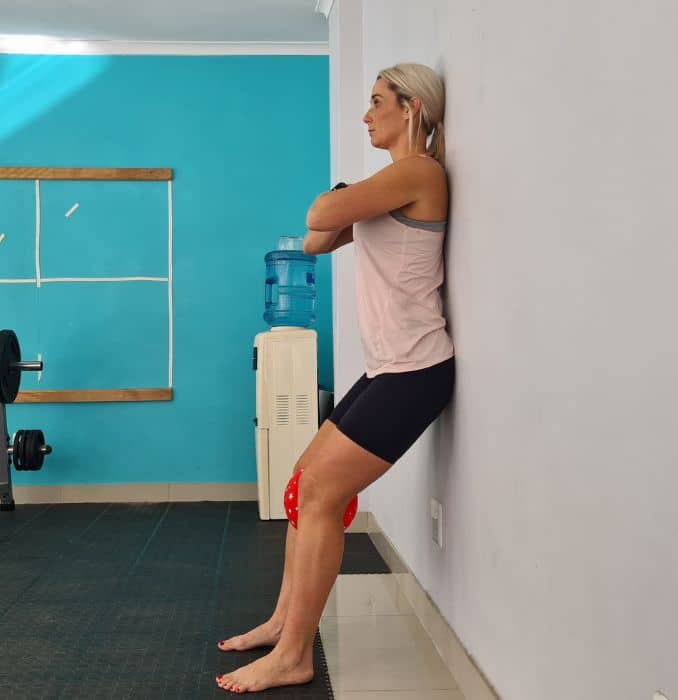 |
 |
Stretching The Knee
1. Quadriceps Stretch
Stand tall and look straight ahead. Keep your hands on something stable and firm for balance, like a chair or a wall so that you can focus on the stretch. Then, bring your heel towards the seat. Afterward, hold this position for 10 seconds, then return to a standing position. Lastly, repeat on the opposite leg, do this for 2 repetitions of 10 seconds; hold each leg.
2. Hamstring Stretch With Band
Lie on your back on the floor. Then, loop the tubing around your left foot with your knee extended. The opposite, or right leg, is bent. Lastly, with your left leg in the air, pull the tubing towards you and stretch out the leg as much as you can to target the hamstring area. This stretch might carry on into the glute. Perform one set of 2 repetitions, alternating back and forth with a 20-second hold.
3. Hip Flexor Stretch
Begin in an upright standing position, maintaining good alignment with your head, shoulders, hips, and legs. Then, take a big step forward with one leg, keeping your toes pointing straight ahead. Slightly bend your front knee and straighten your back leg as you stack your back heel over your toes. Tighten your abdominal area and shift your hips forward. Hold this position for 20 seconds. Return to the starting position and repeat the movement on the opposite side. Start with 1 set of 2 repetitions on each side, holding for 20 seconds.
4. Iliotibial Band Stretching
Start this Knee Stretches in a sitting position on the floor, bend your left leg, and place your left foot on the outside of your right hip. Bend your right leg and place your right foot flat on the floor on the outside of your left thigh. Exhale as you twist your lower body to the right. Place your left fingertips on the floor, bending your hips. Wrap your elbow around your knee, or place your elbow to the outside of your knee with your palm facing forward. Gaze over your back shoulder. Hold this position for up to 1 minute, then do the opposite side.
5. Runner’s Stretch
Begin this Knee Stretch in an upright standing position with your hands against the wall. Take a big step back with one foot, keeping your toes pointing straight ahead and your heels flat on the floor. Bend your front knee and straighten your back leg. Maintain proper alignment with your head, shoulders, and hips. Hold this position for 30 seconds. Return to the starting position and repeat the movement on the opposite leg. Start with one set of 1 repetition on each side, holding for 30 seconds.
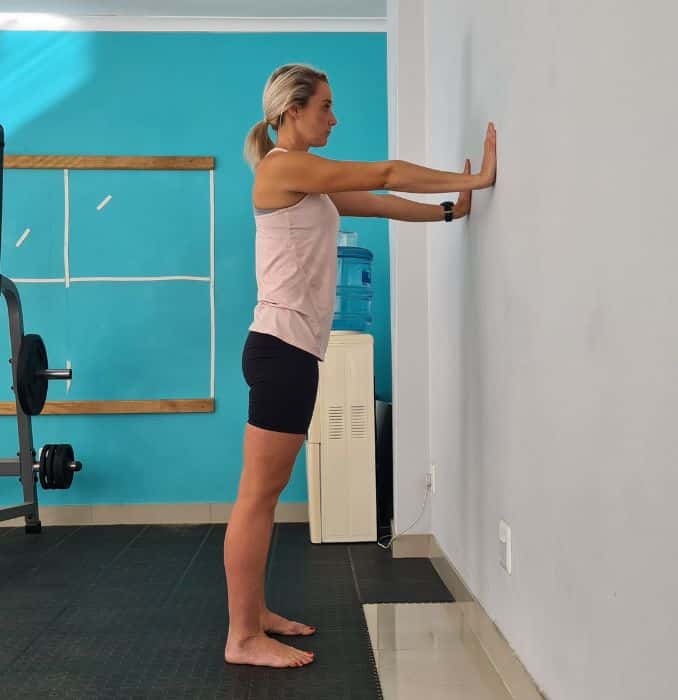 |
 |
Prevention
The physiological sound of the knee, those sounds without underlying pathology, doesn’t necessarily need treatment as it happens naturally, and usually, it is harmless.
Consequently, if we want to avoid the popping and cracking of the knee due to trauma or injury.
Here are some modifications you need to change in your lifestyle to prevent it from happening:
-
Weight Management
Losing at least 2 pounds could go a long way; it lessens the load on your knee joint and makes your body lighter.
-
Activity Modifications
It’s highly recommended to modify some of the activities you do. You can start by changing your exercise routine by decreasing the impactful load on your knees, like jumping or running uphill. You can also do quick knee stretches on the desk while at work. When you are using a bicycle, you should keep the tension on the pedals low. Proper warm-up and cool-down before and after exercise are also encouraged to avoid injury.
-
Avoid Vigorous Activities Like Jumping, Running, Kneeling, Or Squatting For A Long Time
When lifting weights, you should shift the force on your quadriceps muscles and hamstrings muscle groups. Consider using lighter weights but increase the repetition to enhance your strength.
Incorporating vitamin supplements that include ingredients like Curcumin, Resveratrol, and Boswellia is also advisable. Still, you should ask your doctor for the pharmacological treatment that is the best choice for you.
Prognosis
In summary, crepitus is not a condition but a symptom itself. It happens to most individuals and seldom poses a problem if underlying conditions do not accompany it. It’s helpful to observe and listen to your body. If you feel a sudden onset of pain or intermittent pain accompanied by the cracking and popping of your knees, the best remedy is to visit your doctor for a proper diagnosis. Early diagnosis of injury can help preserve the joint and return it to its pre-injured state.
So, say “Goodbye” to knee pain. Get instant access to the complete Knee Pain Solved program today!

